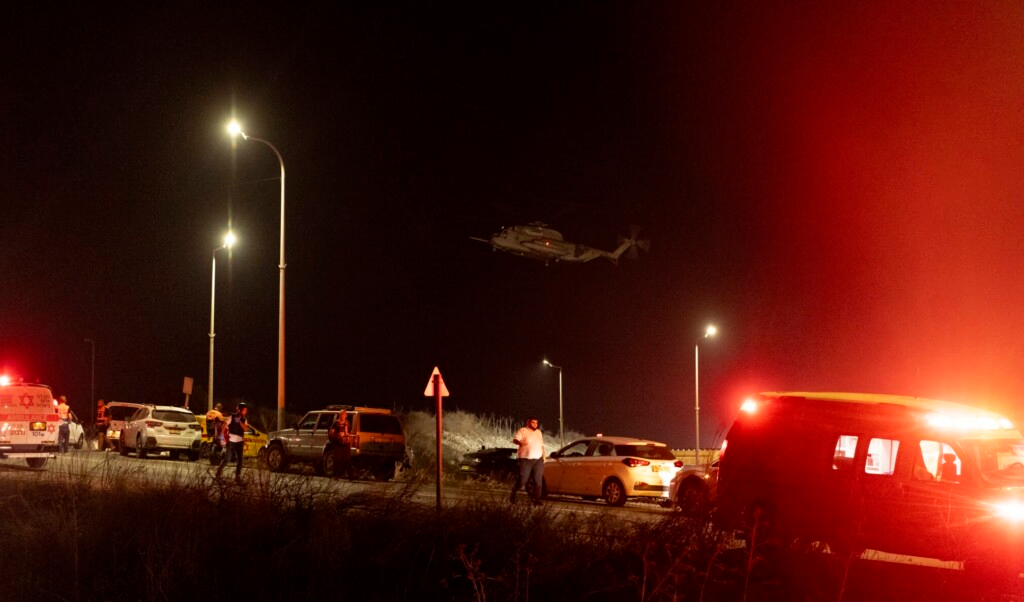
Latest Developments
The Israeli Ministry of Defense announced on October 15 that it held a trial to solicit technologies for countering unmanned aerial vehicles (UAVs) launched by Iran-backed proxies. The ministry said that eight large and small companies participated in the trials, including Elbit Systems, Rafael, and Israel Aerospace Industries and startup firms. “After analyzing the trial results, the Defense Ministry will select several technologies to enter an accelerated development and production process,” the ministry’s announcement said. “This aims to deploy new operational capabilities within months.”
Iran and its proxies, including Hamas, Hezbollah, the Houthis, and Iraqi Shia militias, have attacked Israel with various Iranian-made attack drones. Israeli air defenses can intercept some drones, but many drones can be difficult to detect and intercept in part because of their small radar cross section, ability to fly low and slow, and suitability to be launched both in large numbers and/or in conjunction with a barrage of rockets or missiles that overwhelms defenses.
On October 13, four Israeli soldiers were killed 58 wounded after a drone launched by Hezbollah impacted a training base of the Israel Defense Forces (IDF) Golani Brigade in north-central Israel. Hezbollah claimed that it had launched a “swarm of drones,” including models used for the first time, though a preliminary investigation by the IDF concluded that there were only two drones that entered Israeli airspace — one of which was successfully shot down. On October 4, a drone strike from Iraq killed two IDF soldiers and injured 24 others after impacting a base in the Golan Heights.
Other notable instances of Israeli casualties caused by drones launched by terrorist groups include a July 19 strike by an upgraded Iranian-made Samad-3 drone launched by the Houthis in Yemen that evaded detection after traveling 160 miles and struck in central Tel Aviv, killing one civilian and wounding four others. On May 7, two IDF reservists were killed by a drone that struck the northern Israeli town of Metula. Drones from Hezbollah have also evaded detection to spy on sensitive Israeli military sites on multiple occasions.
“The UAV threat is a multi-arena threat originating from Iran, which supplies UAVs to Lebanon, Yemen, and Iraq, and even launches them itself,” Israeli Defense Minister Yoav Gallant said in a statement. “To face this threat, we must concentrate the national effort of all bodies dealing with the issue to produce operational solutions quickly.”
Expert Analysis
“For months, Hezbollah has tested Israel’s integrated air defense array by threatening its radars and operating drones at the edges of what those radars can detect. While missiles and their launchers often draw the most attention in conversations of integrated air and missile defense, a missile cannot shoot down what it cannot see and track. Sensors that detect threats are as important as the missiles that engage them and require consistent and iterative investment to maintain a clear technological advantage.” — Lydia LaFavor, FDD Research Fellow
“Israel has faced rapidly increasing deadly drone threats over the past year of war. This has included kamikaze drones flown by Iranian-backed groups such as Hezbollah, the Houthis, Iraqi militias, and Hamas. To counter these threats, Israel’s Ministry of Defense has sought to accelerate the development of defenses against these threats. Israel’s defense industry already has a number of ways to counter drone threats, from its Iron Dome air defense system to defenses tailored to detecting, jamming, and knocking down small drones. As the threat grows, Israel is seeking to innovate to be ahead of the curve on the modern battlefield.” — Seth J. Frantzman, FDD Adjunct Fellow
